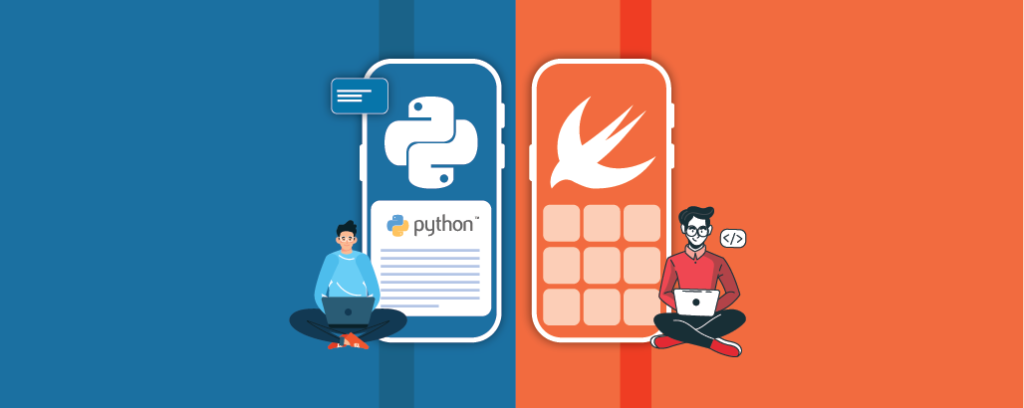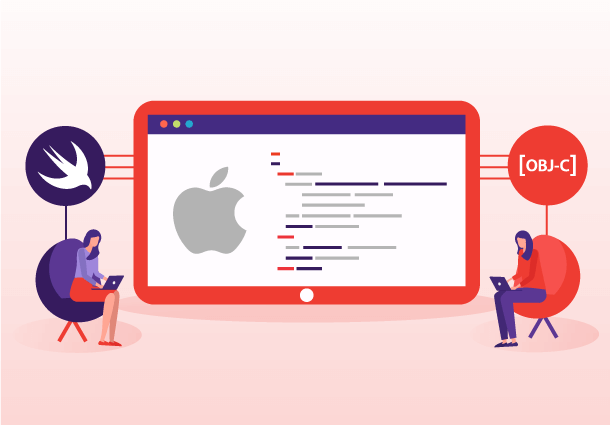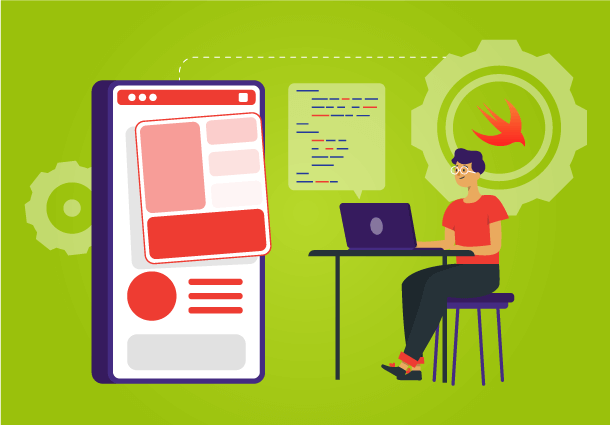Swift Vs Python: A Tale of Two Cyclops
Two well-known programming languages, Swift Vs Python, both with a reputation for special strengths, serve different development demands. Because of its strong and expressive syntax, Apple’s Swift shines in the development of iOS and macOS apps. Contrarily, Python is praised for its adaptability, simplicity, and robust library ecosystem, making it a top choice for applications such as artificial intelligence (AI), machine learning (ML), web development, and more. A fascinating comparison that demonstrates Swift and Python’s different advantages in the software development environment can be found by comparing their features and capabilities.
Objective-C was intended to be phased out in favor of Swift when it was launched in 2014. Building reliable, high-performing iOS and macOS applications is made possible by its clear syntax, safety features, and strong typing.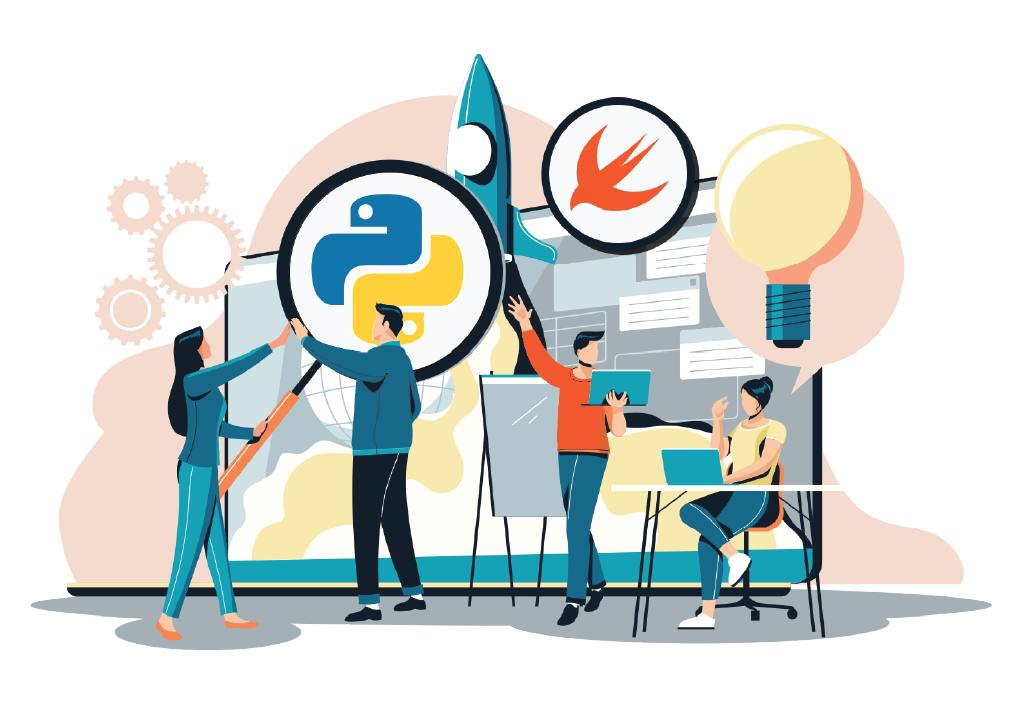 Furthermore, Swift’s dynamic features like closures, generics, and optional allow programmers to produce clear and expressive code, which increases productivity. Swift is the favored language among fans of the Apple platform due to its connection with Apple’s Cocoa and Cocoa Touch frameworks, which promotes fluid development.
Furthermore, Swift’s dynamic features like closures, generics, and optional allow programmers to produce clear and expressive code, which increases productivity. Swift is the favored language among fans of the Apple platform due to its connection with Apple’s Cocoa and Cocoa Touch frameworks, which promotes fluid development.
The landscape of programming languages changes over time as preferences change. Some languages vanish into oblivion, while others see incredible growth. Swift Vs Python where the performance of two languages has recently ascended to the front of the pack, are notable candidates. This article explores Swift and Python’s unique traits, benefits, and drawbacks, revealing their fascinating parallels. Join us on this fascinating adventure to learn life-changing lessons. Explore the complex details of Python’s “Self” idea as well; it’s a crucial topic that deserves in-depth study.
Decoding the Differences: Swift Vs Python
Code and Readability:
Python’s succinct and readable syntax beats Swift when it comes to code readability. Python is a flexible language for interacting with different data structures including arrays, lists with links, graphs, and trees because of its dynamic nature and comprehensive string support, which includes upper- and lowercase strings. Python’s simplicity and usability are enhanced by the use of simple terms, English-like excerpts for looping, if declarations, print declarations, imported functions, and input functions.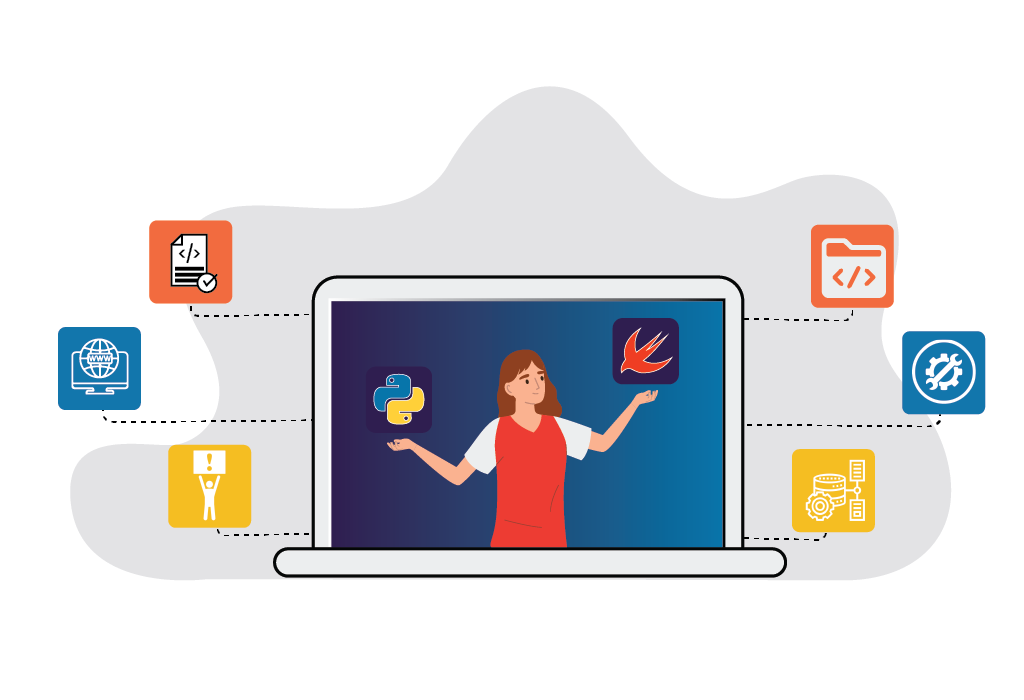
Python’s clear syntax and lack of repetition make it simple for developers to follow along with and understand, which promotes productive teamwork. Python stands out because of its emphasis on simplicity and clarity. Swift also uses English-based grammar, making it expressive. Developers seeking a legible and effective programming language for a variety of applications frequently favor Python due to its attractive design and simple structure.
Use of Domain:
The extensive use of Python in a variety of fields demonstrates its adaptability and versatility. Let’s look at some of the important areas where Python shines:
1. Artificial intelligence: Python is a strong option for developing complex AI algorithms because of its rich library ecosystem, which includes numpy, Scipy, Scikit-Learn, TensorFlow, PyTorch, and Keras. Python is the industry standard for developing AI, outperforming Swift in this field thanks to its robust community support and good visualization options.
2. Desktop GUI: Python may be used to build cross-platform solutions by integrating with GUI frameworks like Tkinter, PyQT, or wxPython. Because of these frameworks, Python is a well-liked option for desktop GUI programming because they improve usability and responsiveness.
3. Data Analytics and Visualization: Because of its scalability and adaptability, Python is a recommended language for data analytics. Data manipulation and visualization are made efficient by libraries like Pandas, NumPy, SciPy, and Matplotlib, which promote insightful analysis.
4. Web Development: Python, which functions as a reliable server-side scripting language, is a useful tool for web development. Smooth functionality and user experiences are made possible by its seamless integration with front-end programming languages like HTML, CSS, and JavaScript.
5. Game Development: Python is a great choice for experimenting and building game functionality due to its simplicity and a large library of pre-built functions. Python can handle different game features and produce 3D images, assisting game makers in their artistic endeavors.
Demand:
With an amazing 15.7 million active programmers, Python is the definition of demand and ubiquity in the programming industry. This resounding choice is evidence of Python’s unrivaled readability and simplicity, which flawlessly combine subject-specific and procedural programming paradigms.
Python’s extensibility, along with a dedication to open-source libraries, is one of its primary assets, making it a broad language open to investigation. The breadth of Python appeals to aspiring developers, making it the perfect language to use for large-scale endeavors.
Python provides competent coders with a tempting income potential, which is a big motivation to explore its world. Python engineers earn an average of $99,525 per year, commanding lucrative prospects that frequently improve with relevant expertise, solidifying Python’s status.
Usage of tools:
Python programmers can choose from a wide variety of tools to improve their coding abilities. IDLE, Sublime Text, Atom, Visual Code Studio, Jupyter Notebook, Spyder, PyCharm, PyDev, Keras, Pip Package, Vim, and Selenium are a few well-known tools. Each of these technologies provides a cohesive environment, enabling programmers to produce code that is both comprehensible and efficient. They give helpful ideas, such as automatically suggesting variable names, spotting syntax and formatting mistakes, and giving details on how each variable works.
Conversely, Swift developers rely on a unique collection of tools to streamline their development process. Among the crucial tools used are SwiftLint, Sourcery, BartyCrouch, SwiftGen, Carthage, SwiftFormat, Fastlane, SourceKitten, Xcode, and AppCode. These IDEs are essential for editing, creating, testing, and debugging software since they speed up the software creation process and offer all-inclusive solutions.
Developers of Swift Vs Python both profit from a wide range of tools designed specifically for their respective programming languages. By allowing programmers to concentrate on creating effective, fault-free, and feature-rich apps for each of their platforms, these tools enhance the development experience.
Programming language supports:
Programming languages like Python, JavaScript, C, C++, Ruby, C#, GO, and Rust are among the astounding number of ones that Swift is compatible with. Python, in comparison, supports a wide variety of languages, including PHP, R, Scala, Javascript, Perl, Ruby, and many others.
Swift and Python’s adaptability cuts across different industries, providing developers with options in web development, iOS app development, server-side scripting, artificial intelligence, and more. Although both languages have strong capabilities, Python leads the pack in supporting a larger number of languages because of its rich library collection.
Your decision between Swift Vs Python will depend on the particular needs of your project. Swift is a great choice if you want to create applications. However, Python is the best option for forays into machine learning, web scraping, or data modeling due to its extensive library ecosystem and comprehensive assistance for numerous languages.
Management of Memory:
Swift:
Swift uses Automatic Reference Counting (ARC) to effectively manage memory use in your project.
When a new Swift class is created, ARC automatically increases the object’s reference count, guaranteeing that it remains in memory throughout its usage. As a result, developers won’t have to worry about manually releasing or removing objects.
The reference count of any variable that refers to a member of the class will be increased whenever it is assigned to another variable or returned from a function. On the other hand, ARC decreases the reference count appropriately when a value of nil is assigned to an instance variable.
In order to protect your app from memory leaks and stop useless objects from taking up valuable memory space, ARC deallocates an object when its reference count reaches zero and releases the memory that goes along with it.
Python:
By keeping track of variables and their related values while a program is running, Python efficiently manages memory usage. On the other hand, when the list expands with more variables, it uses up more computer memory.
When working with a large array of variables, the list can get fairly long, sometimes resulting in an out-of-memory issue if Python is unable to manage them all.
By keeping variables outside of the main program code and optimizing memory usage, functionalities that enable out-of-memory faults can be reduced. Additionally, the use of lists inside of lists guarantees that each item retains a single value rather than several values, leading to more effective memory usage. With this method, you can run your Python programs while preventing excessive memory usage.
Performance of Swift Vs Python:
Since the 1980s, Objective-C has been the standard language for Apple product applications. Swift, which was released in 2014 as its replacement, stands out in terms of performance.
Swift’s compiled nature as opposed to being interpreted is the main element causing it to be faster than Python. The intrinsic efficiency of compiled languages comes from the transformation that takes place before execution, turning the source code into machine-readable instructions. As opposed to this, interpreted languages carry out this conversion procedure during runtime, adding a step that inevitably affects performance.
Swift has a clear benefit over interpreted languages like Python since it is compiled rather than interpreted at runtime. Swift is positioned at the top of the list of outstanding performance programming languages because of its inherent efficiency, which translates into speedier execution.
In addition to being compiled, Swift’s low-level programming skills and optimization tools improve performance even more. Swift is a good choice for performance-critical applications because of its design philosophy of minimizing overheads and maximizing efficiency. Swift enables developers to write high-performing code that is suited to their individual requirements by allowing them to gain access to memory and fine-tune performance. Swift is now the top option for programmers looking for apps with unmatched performance because of its blend of compiled effectiveness and low-level optimizations.
Concisely Recapping the Main Ideas
The final decision in the Swift vs Python debate will depend on the particular needs and goals of each project. When used by skilled developers, both languages are vital resources because they both have unique advantages and support a variety of areas. The Swift programming language, which was introduced in 2014 to replace Objective-C, has quickly become well-known within the Apple ecosystem. Swift thrives in performance-critical applications because of its compressed nature and low-level programming skills, especially for the development of iOS and macOS.
People who are invested in the Apple ecosystem will find its seamless interaction with their platforms and sophisticated tooling to be an alluring option. Python, on the other hand, has distinguished itself as a real multipurpose language and won the affection of thousands of developers worldwide. Python is a go-to language for a variety of applications, from developing websites to artificial intelligence and data analysis. It is known for its simplicity, readability, and wide library support. Due to its interpretive nature, it is very adaptable and accessible, which promotes a thriving and encouraging community.
Swift takes the lead in application development, providing high-performance solutions adapted to Apple’s ecosystem. Python, however, is a strong rival when it comes to data processing, machine learning, or web scraping because of its extensive library ecosystem and user-friendly interface. Knowing the precise needs of the project and the developer’s experience will ultimately choose which language to use—Swift Vs Python. Swift is a fantastic choice if you’re looking to maximize the capabilities of Apple’s platforms and want a language that excels in performance-critical settings. Python, however, stands out as the preferred language if flexibility, readability, and broad applicability across multiple domains are priorities.
Decipher the Power of Swift Vs Python From Pattem Digital
The full potential of these potent programming languages will be unlocked by selecting Pattem Digital for your Swift Vs Python development requirements. We offer swift app development services of unequaled knowledge in utilizing the possibilities of these languages for a range of projects owing it to our talented team of engineers who are fluent in both Swift and Python.
Our team is prepared to produce excellent results whether you are investigating the wide potential of Python in web development, data analysis, or artificial intelligence, or taking the plunge into iOS app development with Swift. We adopt a client-centered strategy and customize our Java development services to match your particular needs and professional goals.
At Pattem Digital, we are aware that each project is unique, and our adaptability enables us to manage tasks of all sizes and degrees of complexity. We have gained the trust of clients all around the world because of our track record of successful Swift and Python development projects.
We make sure that your Swift vs Python endeavors succeed by committing to innovation, technical mastery, and effective project management. This results in projects that deliver exceptional user experiences and seamless functionality. By selecting Pattem Digital as your development partner, you are guaranteed a cooperative and rewarding journey in which your vision is brought to life using the skills of Swift and Python.
